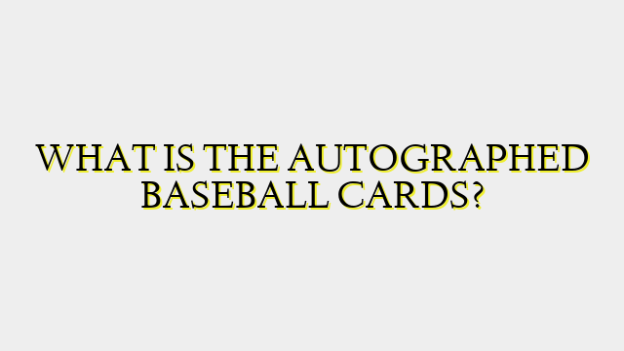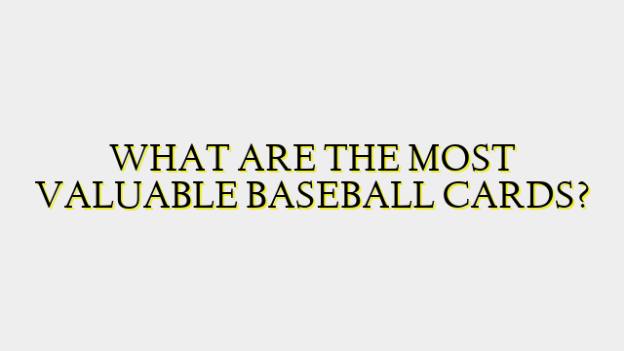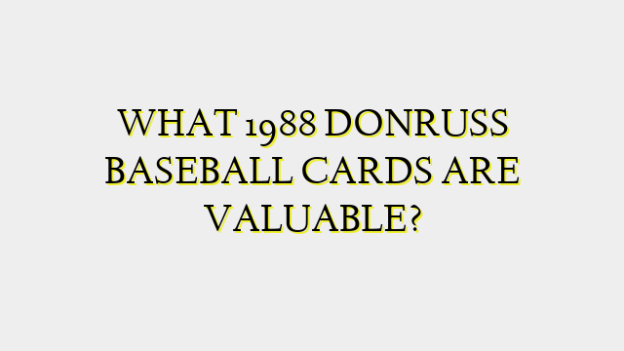Autographed baseball cards are trading cards that feature the signature of the player whose photograph and stats are printed on the card. Getting players to sign their own cards is a popular way for collectors to add value and uniqueness to their collections. The autograph makes each card one-of-a-kind and helps capture a piece of sports history by connecting the player depicted directly to the fan through their signature.
Collecting autographed baseball cards has been a popular hobby for decades. Fans enjoy getting cards signed at games, through the mail via fan mail programs run by card companies, or at card shows and memorabilia conventions. Some of the earliest star players from the early decades of the 20th century signed photos and postcards that were essentially the predecessors to modern baseball cards. It was not until the 1970s and ’80s that collecting autographed modern cardboard trading cards really took off.
As interest grew in authenticated autographs on cards, companies began mass producing pre-signed cards as a more efficient alternative to individual signings. These inserts titled “signed” or “auto” became popular collector items. Purists argue getting a signature in-person provides provenance and a personal connection lacking from factory-signed product. Today, both hand-signed and pre-signed cards have thriving secondary markets and are actively collected.
The value of a signed card is determined largely by the career accomplishments and notoriety of the player, as well as factors like the visual appeal and overall condition or grade of the specific card. An autograph almost always increases the value. Rookie cards or particularly rare serially-numbered parallel inserts that feature a star player’s signature in good condition can sell for thousands of dollars. More common cards of modern Hall of Famers are still valuable signed, often worth hundreds.
Autographing one’s own collectibles is a time-honored tradition in many sports, and most established athletes are willing to sign for appreciative fans. The explosion of the memorabilia market has created a vast demand that is impossible for any one player to keep up with completely. For their part, collectors should always be respectful of a player’s time and effort when requesting autographs. Following basic etiquette helps ensure the hobby remains enjoyable for athletes and fans alike.
While getting autographs is fun, the greatest thrills for many signed card collectors come from carefully curating personal collections focused on favorite players, teams or eras. Arranging autographed cards alongside related uncertified pieces completes comprehensive “collections within collections” telling detailed baseball histories through cardboard. Whether showcasing stars of the past or present, autographed sets display collectors’ passions and connect them more intimately to the sports memorabilia industry. For die-hard autograph hounds, amassing a prestigious signed collection becomes as much a journey as achieving a destination.
As with any category of sports collectibles, autographed baseball cards must be properly stored, displayed and preserved to maintain their condition grades over time. Toploaders, magnetic holders, albums and other protective enclosures shield the signatures and surfaces from degradation. Proper care helps maximize an autographed card’s future potential value for inheritance or resale. Passed down through generations, cherished collections of signed cards can become family heirlooms commemorating lifelong fandom and personal memories with favorite players.
Autographed baseball cards occupy a special place at the intersection of collecting, sports history and memorabilia. Obtaining signatures connects card collectors directly to iconic athletes through a personalized artifact. Carefully cultivated collections provide enjoyment and tell the stories of players and teams for years to come. With valued pieces appreciated by fans worldwide, autographed cards represent both pinnacles of particular collections and treasured links between professional baseball and its many devoted supporters.




